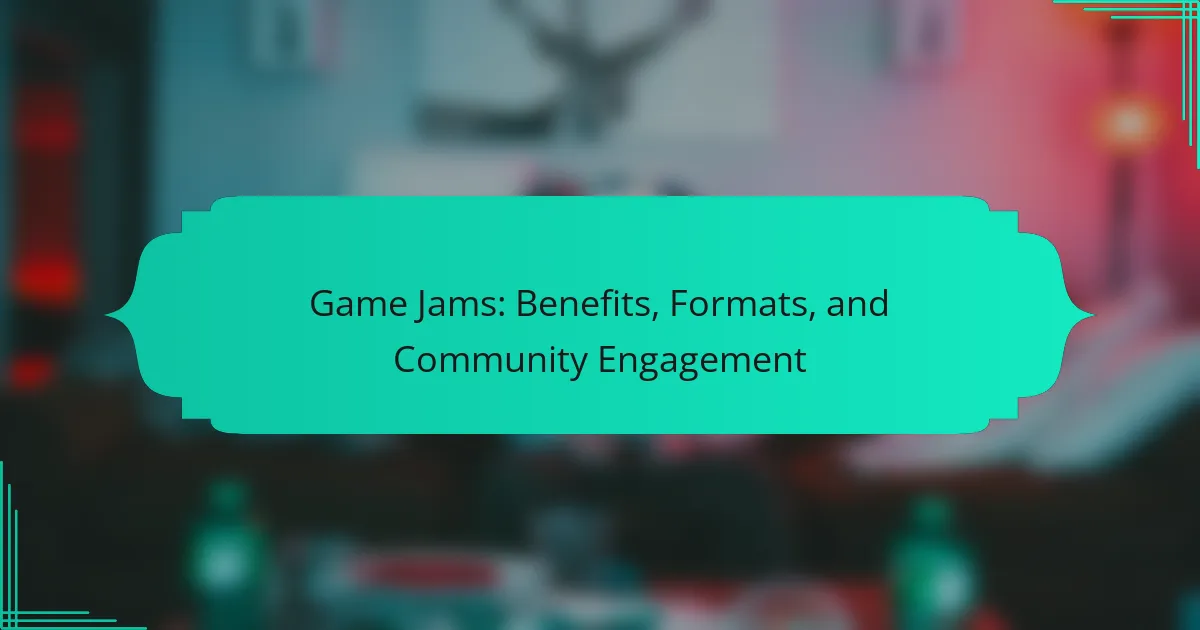Game jams offer significant benefits such as skill development, networking, and enhanced creativity. They utilize various formats like hackathons and themed competitions to encourage innovation. Community engagement is fostered through collaboration and inclusivity, creating lasting connections among participants. However, challenges like time constraints and varying skill levels can impact the experience.
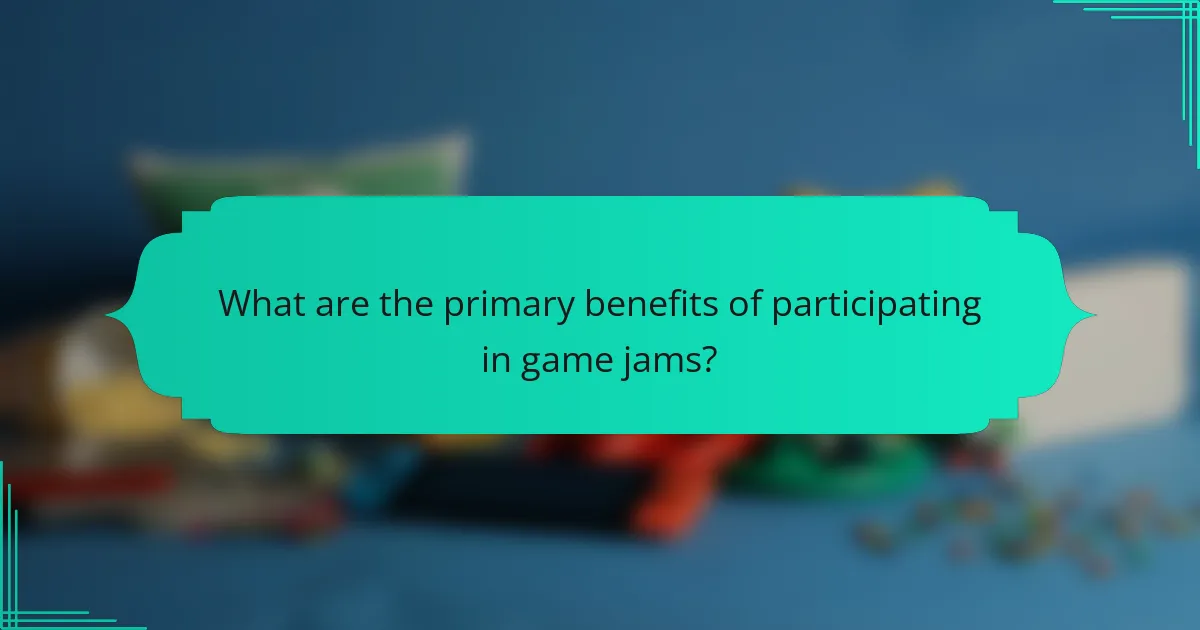
What are the primary benefits of participating in game jams?
Participating in game jams offers numerous benefits, including skill development, networking opportunities, and enhanced creativity. Game jams encourage rapid prototyping, allowing participants to experiment with new ideas and technologies. They foster collaboration, enabling developers to work with diverse teams and learn from each other. Additionally, game jams can lead to portfolio-building projects and potential career opportunities in the gaming industry.
How do game jams enhance creative skills?
Game jams enhance creative skills by fostering collaboration, experimentation, and rapid problem-solving. Participants engage in time-constrained challenges that encourage innovative thinking and adaptability. This environment promotes skill development in game design, coding, and storytelling, which are essential for creative growth. Additionally, feedback from peers during these events stimulates new ideas and perspectives, further enhancing creativity.
Why do game jams foster collaboration among developers?
Game jams foster collaboration among developers by creating an immersive environment that encourages teamwork and creativity. Participants share skills and ideas, enhancing problem-solving and innovation. The time constraints of game jams promote quick decision-making and adaptability, further strengthening collaborative efforts. Additionally, these events often facilitate networking opportunities, leading to lasting partnerships and community building.
What networking opportunities arise from game jams?
Game jams provide unique networking opportunities for participants, fostering connections with other developers, artists, and industry professionals. Collaborating in a time-sensitive environment encourages teamwork and skill-sharing. Participants often form lasting relationships that can lead to future collaborations or job opportunities. Additionally, game jams attract sponsors and mentors, offering access to valuable industry insights and resources.
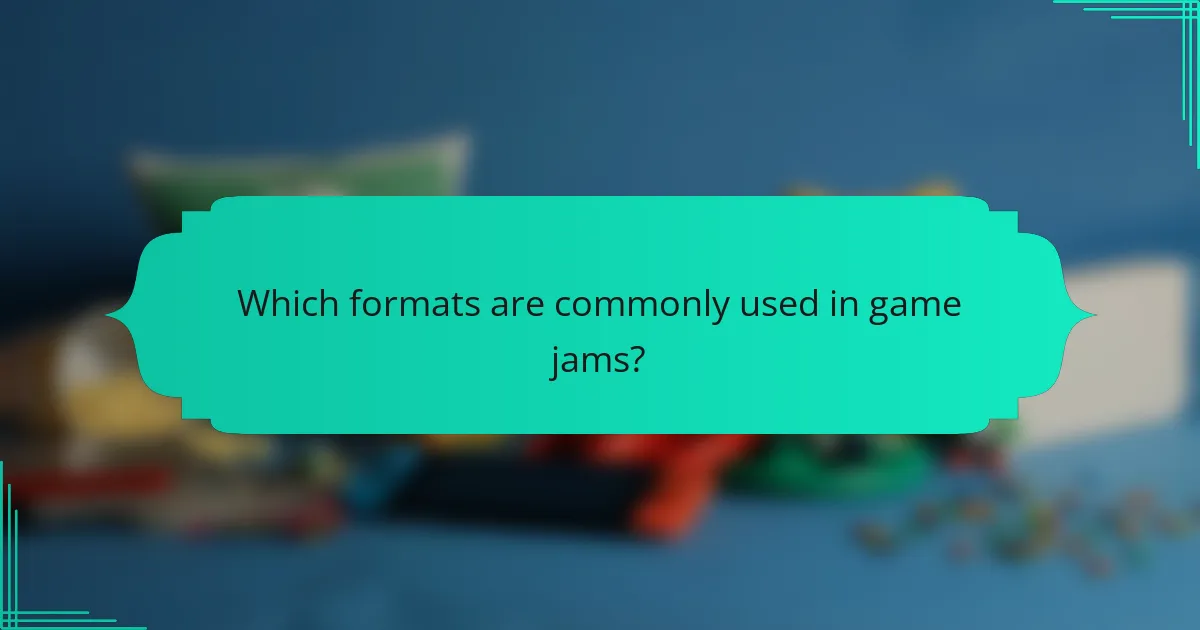
Which formats are commonly used in game jams?
Game jams commonly utilize formats such as hackathons, game design sprints, and themed competitions. These formats encourage rapid development and creativity, often within a set timeframe. Participants may create games based on specific themes or constraints, fostering innovation and collaboration. Additionally, online platforms have emerged, enabling remote participation and expanding the global reach of game jams.
What are the differences between online and in-person game jams?
Online game jams offer flexibility and global participation, while in-person game jams foster direct collaboration and networking. Online formats allow participants to join from anywhere, enhancing diversity. In-person events promote hands-on teamwork and immediate feedback. Both formats encourage creativity but differ in social interaction and logistical challenges.
How do theme-based game jams influence creativity?
Theme-based game jams significantly enhance creativity by providing focused challenges that inspire innovative ideas. Participants are encouraged to think outside the box, leading to unique game concepts. The constraints of a specific theme stimulate problem-solving skills and collaboration among team members. Additionally, these events foster a sense of community, allowing creators to share diverse perspectives and techniques, which further enriches the creative process.
What role do time constraints play in game jam formats?
Time constraints significantly enhance creativity and collaboration in game jam formats. These limits encourage participants to focus on essential elements, fostering innovative solutions. The urgency often leads to rapid prototyping and experimentation, allowing teams to explore unique gameplay mechanics. Additionally, the competitive aspect of time pressure can boost motivation and engagement among participants, creating a dynamic environment that promotes community bonding.
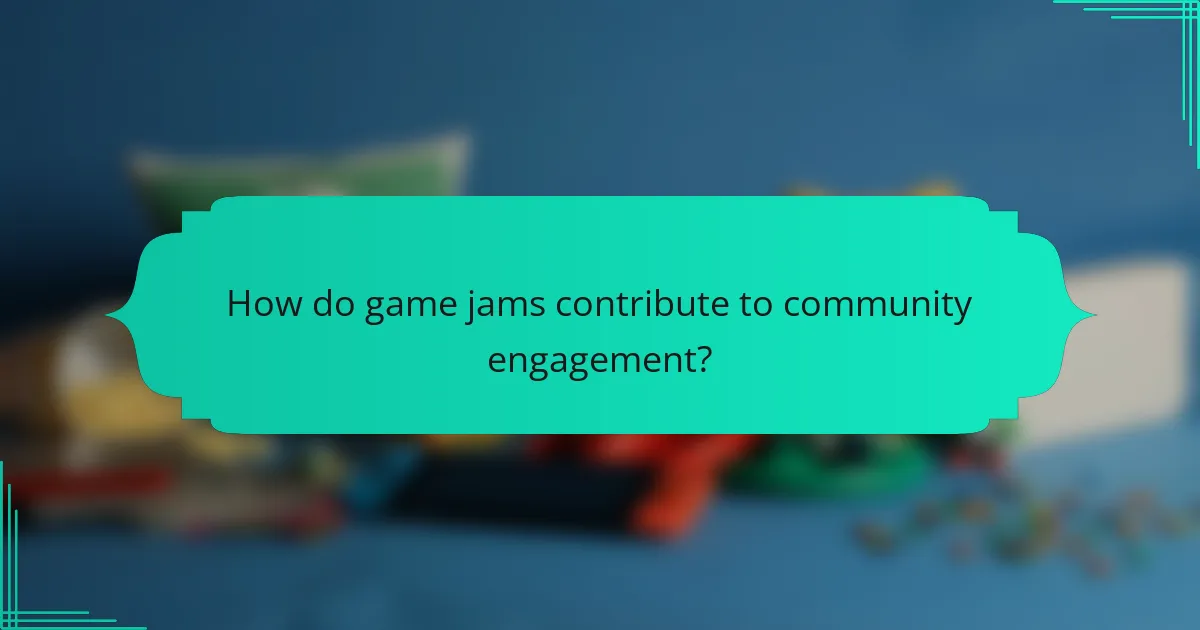
How do game jams contribute to community engagement?
Game jams enhance community engagement by fostering collaboration, creativity, and networking among participants. They create a platform for developers to share ideas and showcase their skills. Additionally, game jams encourage inclusivity by welcoming diverse participants, leading to a richer gaming culture. These events often result in lasting connections and support networks that extend beyond the jam itself.
What initiatives support inclusivity in game jams?
Game jams promote inclusivity through various initiatives. These include mentorship programs that connect experienced developers with newcomers, ensuring diverse voices are heard. Accessibility guidelines help accommodate participants with disabilities. Community outreach efforts target underrepresented groups, fostering a welcoming environment. Collaborative platforms encourage teamwork across different backgrounds, enhancing creativity and innovation. Finally, prizes for diverse teams incentivize participation from a broad spectrum of individuals, enriching the overall game jam experience.
How do local game development communities benefit from hosting game jams?
Local game development communities gain significant advantages from hosting game jams. These events foster collaboration, creativity, and skill development among participants.
Game jams encourage networking, allowing developers to connect with peers and industry professionals. They also provide a platform for experimenting with new ideas and technologies in a time-constrained environment, enhancing innovation.
Additionally, these events can boost local economies by attracting participants and sponsors, promoting local talent. Game jams often lead to the creation of new projects and startups, contributing to the growth of the gaming industry in the area.
Overall, hosting game jams strengthens community ties and promotes a vibrant game development culture.
What is the impact of mentorship during game jams?
Mentorship during game jams enhances creativity, skill development, and networking opportunities. Experienced mentors provide guidance, helping participants navigate challenges and improve their projects. This support fosters collaboration, leading to innovative game designs. Mentorship also boosts confidence, encouraging participants to take risks and experiment with new ideas.
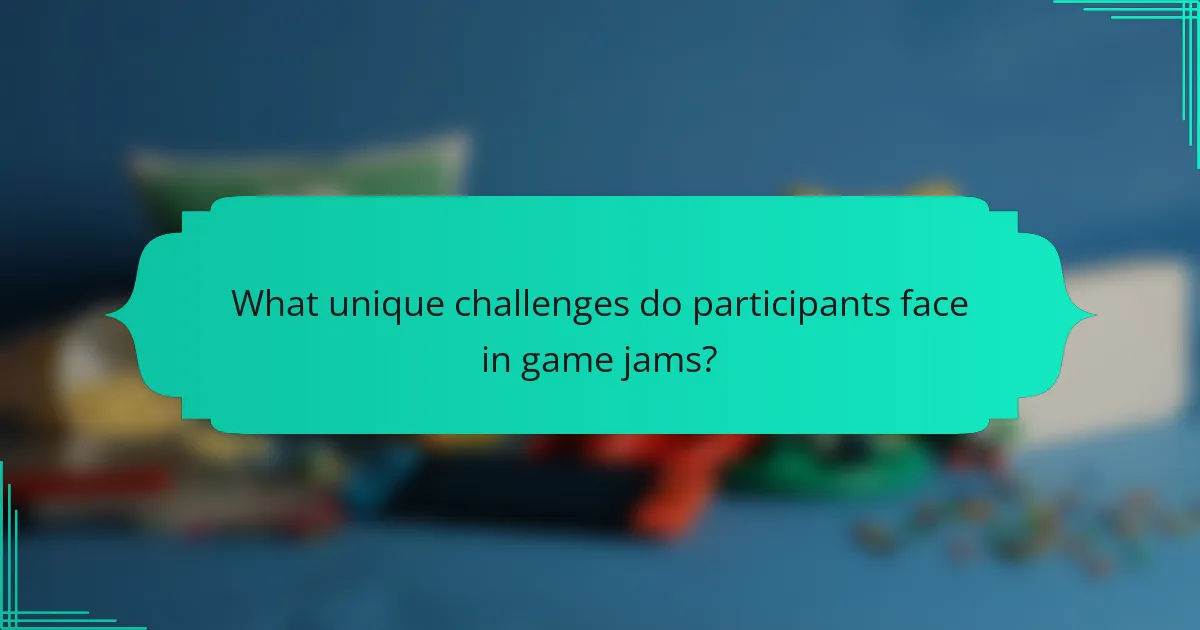
What unique challenges do participants face in game jams?
Participants in game jams face unique challenges such as time constraints, limited resources, and high-pressure environments. These factors can lead to stress and burnout, impacting creativity and collaboration. Additionally, participants may struggle with skill gaps, as teams often consist of individuals with varying expertise. The need to rapidly prototype ideas can create difficulties in maintaining quality and coherence in the final product. Lastly, managing team dynamics under tight deadlines can pose significant interpersonal challenges, affecting overall project outcomes.
How can time management affect game jam outcomes?
Effective time management significantly improves game jam outcomes by enhancing productivity and creativity. Teams that allocate time wisely can better focus on project goals, leading to higher quality games. Prioritizing tasks allows for efficient use of limited hours, ensuring all aspects of game development are addressed. As a result, well-managed teams often produce more polished and innovative games, increasing their chances of success in competitions.
What technical limitations are common in game jams?
Common technical limitations in game jams include time constraints, limited resources, and platform restrictions. Developers often face challenges with software compatibility and hardware performance. Additionally, a lack of access to advanced tools can hinder creativity and innovation. These factors can significantly impact the quality and scope of games produced during the event.
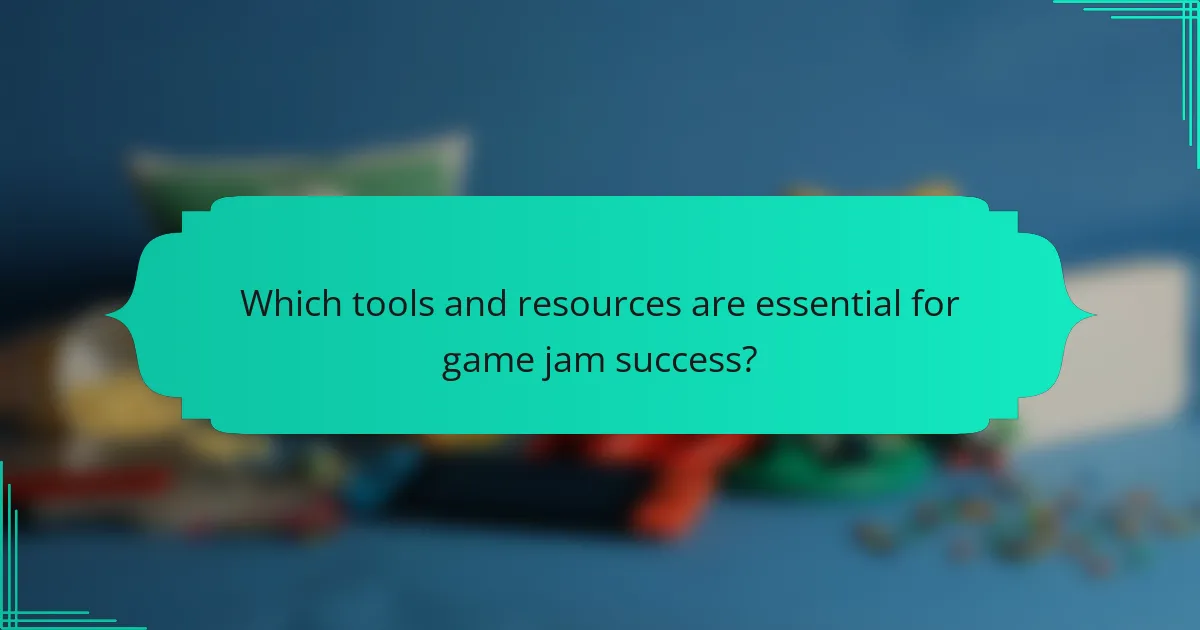
Which tools and resources are essential for game jam success?
Essential tools for game jam success include game engines, collaboration software, and asset libraries. Game engines like Unity or Unreal Engine facilitate development. Collaboration software such as Discord or Trello enhances team communication and organization. Asset libraries provide ready-made graphics and sounds to accelerate production. These resources streamline the creative process and foster community engagement.
What software is most popular among game jam participants?
Unity is the most popular software among game jam participants. It offers a user-friendly interface and extensive resources. Other commonly used software includes Unreal Engine, Godot, and GameMaker Studio. Unity’s versatility allows for rapid prototyping and cross-platform development, making it ideal for the fast-paced nature of game jams. Participants often choose tools based on their familiarity and the specific requirements of their projects.
How can participants effectively use online platforms for collaboration?
Participants can effectively use online platforms for collaboration by leveraging tools designed for communication, project management, and feedback. These platforms enhance teamwork during game jams by facilitating real-time interaction and resource sharing.
Key strategies include utilizing video conferencing for brainstorming sessions, employing project management software to track progress, and using collaborative document editing for scriptwriting and design. Additionally, engaging with community forums fosters networking and skill-sharing, enriching the overall game development experience.
Choosing platforms that support version control and asset management is vital for maintaining organization and ensuring that all team members access the latest updates. Emphasizing clear communication and defined roles within the team can significantly improve collaboration outcomes during game jams.
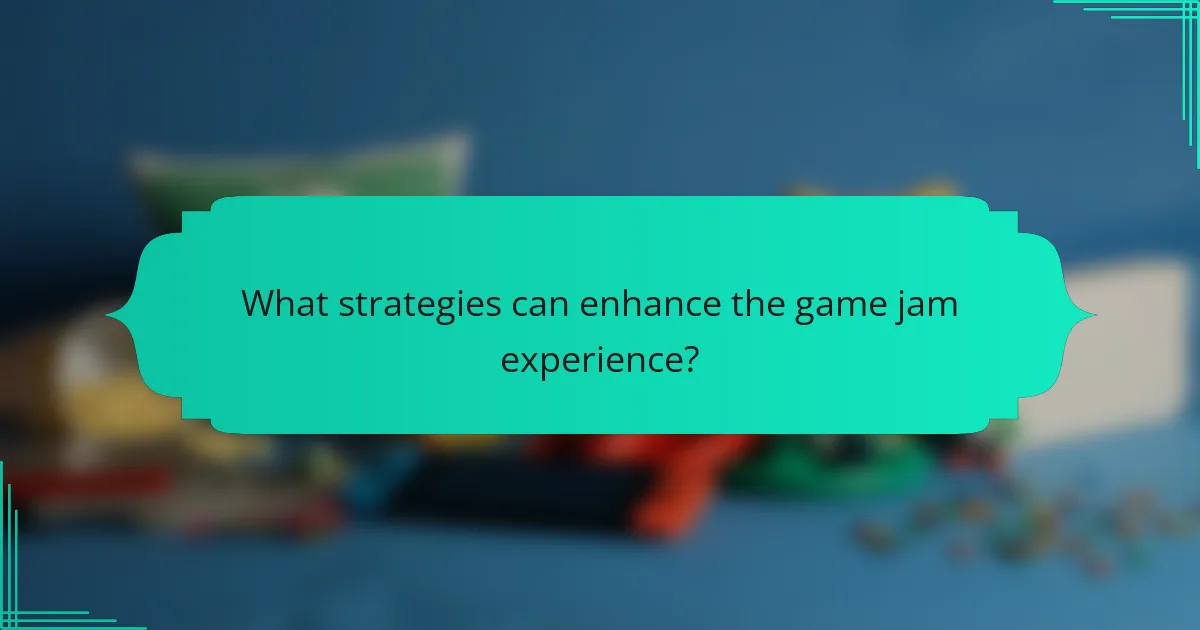
What strategies can enhance the game jam experience?
To enhance the game jam experience, participants should focus on collaboration, time management, and community engagement. Effective communication fosters teamwork and creativity. Setting clear goals and deadlines ensures productivity. Engaging with the broader community through feedback and sharing progress builds connections and encourages support.
What are the best practices for effective team dynamics?
Effective team dynamics in game jams involve clear communication, defined roles, and collaborative problem-solving. Establishing a positive atmosphere encourages creativity and innovation. Regular feedback sessions enhance team cohesion and improve project outcomes. Utilizing tools for project management streamlines workflow and ensures accountability.
How can participants avoid common pitfalls during game jams?
Participants can avoid common pitfalls during game jams by planning effectively, communicating clearly, and maintaining realistic expectations. Prioritize tasks to ensure essential elements are completed first. Establish open lines of communication with team members to address issues promptly. Set achievable goals to avoid burnout and frustration. Emphasize collaboration to leverage diverse skills and perspectives, enhancing the overall project quality.
What tips can help maximize learning outcomes from game jams?
Participating in game jams can significantly enhance learning outcomes. To maximize these benefits, focus on collaboration, time management, and feedback.
1. Collaborate effectively with team members to leverage diverse skills.
2. Set clear goals and timelines to maintain focus and productivity.
3. Seek constructive feedback during and after the jam to identify areas for improvement.
4. Experiment with new tools and techniques to expand your skill set.
5. Reflect on the experience to consolidate learning and apply insights to future projects.
